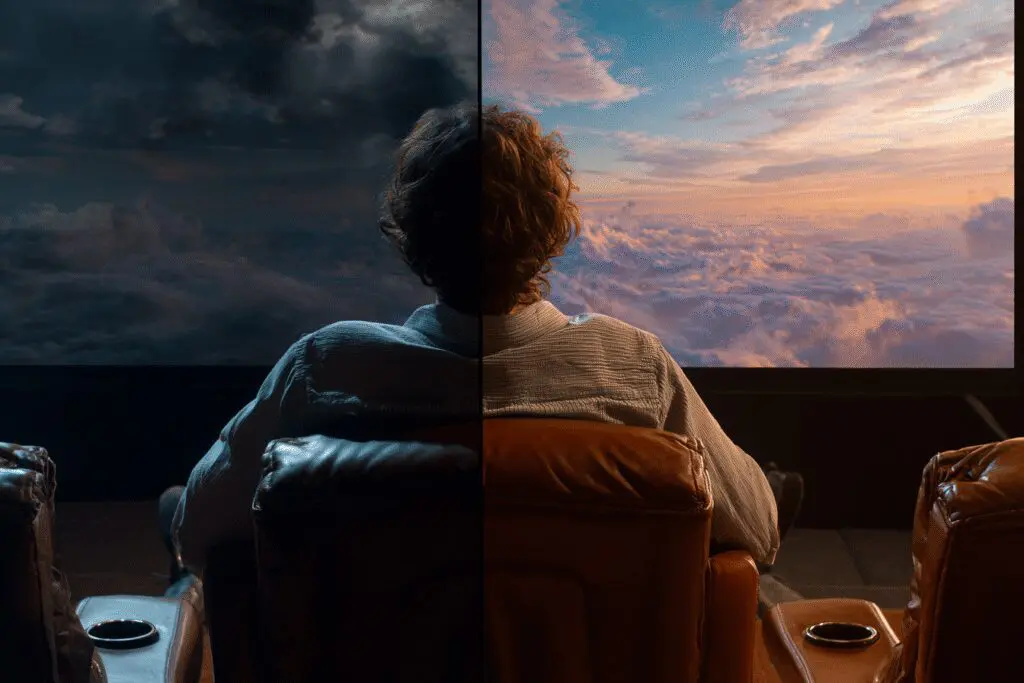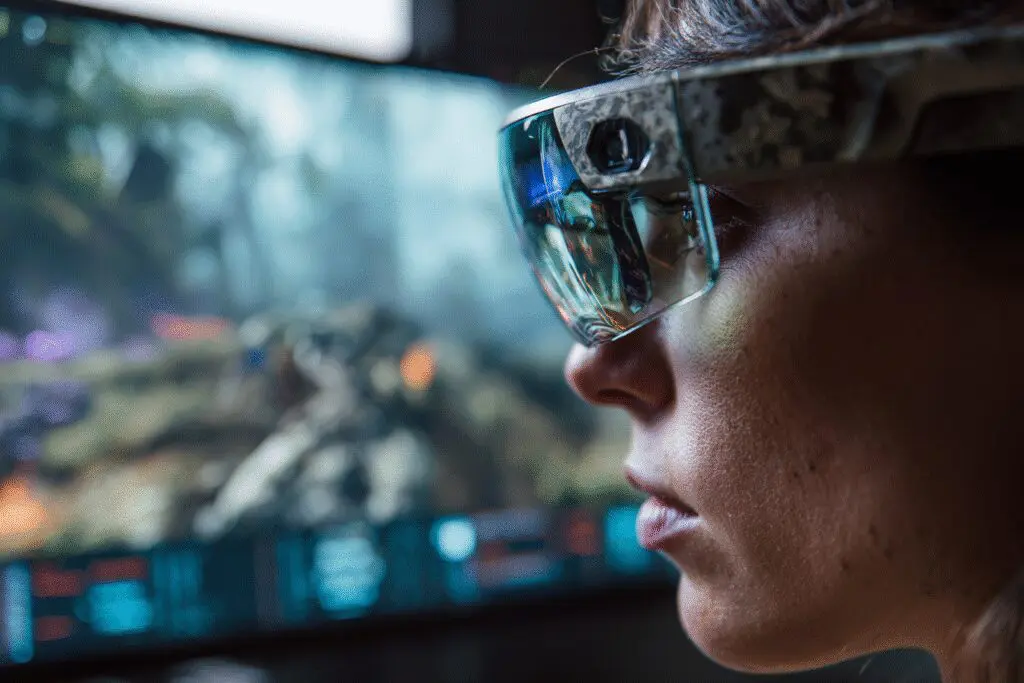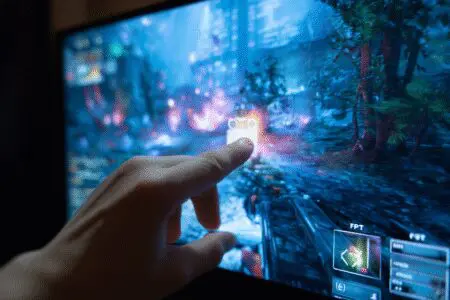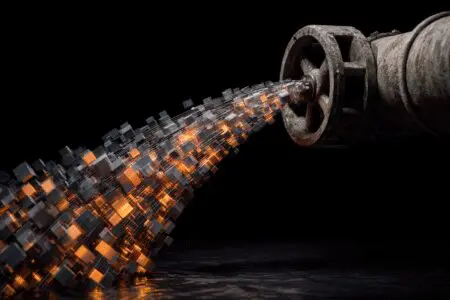You just dropped a serious amount of cash on a new gaming PC. You’ve installed your favorite fast-paced shooter, you load into a match, and… it feels sluggish. Choppy. Something is just off. You have the powerful hardware, so what’s holding you back? More often than not, the answer lies hidden within a labyrinth of graphics settings. This guide is your map to navigating that maze. We’re going to break down exactly how to improve your gaming experience by mastering your FPS settings, transforming choppy gameplay into a buttery-smooth visual feast.
The goal here isn’t to make your game look like it’s from 1998. Instead, it’s about making smart, informed decisions. It’s about understanding which settings provide the most visual bang for their performance buck. Consequently, you can maintain beautiful graphics while achieving the high, stable frame rate you need to play at your best. Let’s dive in and unlock your PC’s true potential.
More in Gaming Performance & Optimization Category
How to Improve Download Speed on PC
How to Increase CPU Performance for Gaming
How to Optimize Laptop for Gaming
Why Does FPS (Frames Per Second) Matter So Much Anyway?
Before we start tinkering, it’s crucial to understand what we’re even chasing. Think of a video game like one of those old-school flipbook animations. Each page is a single, static image, or a “frame.” When you flip through the pages quickly, you create the illusion of smooth motion. FPS, or Frames Per Second, is simply a measure of how many of these “pages” your computer can draw and display on your screen in a single second.
A low FPS, like 30, means you’re seeing fewer images per second. This results in gameplay that feels jerky and unresponsive. Conversely, a high FPS, like 60 or 144, provides a flood of visual information. The animation becomes incredibly smooth, motion blur is reduced, and the game feels significantly more responsive. This isn’t just about pretty visuals; it directly impacts your gameplay. In a competitive shooter, seeing an opponent a few milliseconds earlier because of a higher frame rate can genuinely be the difference between winning and losing a gunfight.
Before You Touch Anything: What’s Your Baseline?
You can’t fix a problem if you don’t know it exists. The very first step is to measure your current performance. Randomly changing settings without seeing their real-time impact is like trying to find your way in the dark. You need to establish a baseline to know if your changes are actually helping.
How Do I See My Current FPS?
Thankfully, seeing your frame rate is easier than ever. You almost never need to download a separate program just for this. Most gaming platforms have a built-in tool that can overlay an FPS counter on your screen.
- Steam Overlay: If you’re playing a game on Steam, go to Settings > In-Game and find the “In-game FPS counter.” You can choose which corner of the screen to place it in and even enable a high-contrast color option to make it more visible.
- NVIDIA GeForce Experience: If you have an NVIDIA graphics card, the GeForce Experience overlay is incredibly powerful. The default hotkey is Alt+Z. From there, you can go into the settings (the gear icon) > HUD Layout > Performance > FPS, and choose a spot for the counter.
- AMD Radeon Software: For AMD users, the default hotkey is Alt+R to open the software overlay. You can enable performance metrics from there, which will show your FPS along with other useful stats.
Turn one of these on and jump into a game. Pay attention to the number. Does it stay stable? Does it plummet during intense action? This number is your starting point.
What is a “Good” FPS for Gaming?
The term “good” is subjective, but there are widely accepted targets in PC gaming.
- 30 FPS: This is generally considered the absolute minimum for a playable experience. It was the standard for older consoles, but on PC, it often feels choppy and unresponsive, especially with a mouse and keyboard.
- 60 FPS: This is the gold standard for most gamers. It provides a smooth, responsive experience that is a massive leap up from 30 FPS. For the vast majority of single-player and casual games, a stable 60 FPS is the primary goal.
- 120+ FPS: This is the territory of competitive gamers and enthusiasts with high-refresh-rate monitors (120Hz, 144Hz, or higher). The added smoothness can provide a tangible competitive edge in fast-paced games like Valorant or Apex Legends.
Ultimately, consistency is king. A rock-solid 70 FPS is far better than a frame rate that bounces wildly between 80 and 120. Those fluctuations cause noticeable stutter and can be even more distracting than a consistently lower, but stable, frame rate.
The Heavy Hitters: Which Settings Wreck Your FPS the Most?
Alright, with your FPS counter up and running, it’s time to get your hands dirty. Not all graphics settings are created equal. Some have a monstrous impact on performance, while others barely move the needle. If you’re hunting for a big FPS boost, these are the first settings you should inspect.
What is Resolution and How Much Does It Impact Performance?
Resolution refers to the number of pixels on your screen, expressed as width by height (e.g., 1920×1080). Think of it as the size of the canvas your graphics card has to paint for every single frame.
- 1080p (1920×1080): The longtime standard for PC gaming.
- 1440p (2560×1440): The new sweet spot, offering a sharper image than 1080p without being as demanding as 4K.
- 4K (3840×2160): Incredibly sharp and detailed, but it requires a massive amount of graphical horsepower to run smoothly.
Moving from 1080p to 1440p means your GPU has to render about 77% more pixels. Going from 1080p to 4K means it’s pushing four times the number of pixels. This is why resolution is the single biggest factor in game performance. While you should always try to run at your monitor’s native resolution for the sharpest image, lowering it is a last-ditch effort that will provide a huge FPS boost.
Should I Turn Off Anti-Aliasing to Get More FPS?
Have you ever noticed the shimmering, jagged edges on objects in a game? Gamers call them “jaggies.” Anti-aliasing (AA) is a technique designed to smooth out those edges, creating a more realistic and pleasant image. However, it achieves this by doing extra work, which costs performance.
Different types of AA have different performance costs. FXAA (Fast Approximate Anti-Aliasing) is a very “cheap” option that blurs the edges slightly but has a minimal impact on FPS. On the other hand, MSAA (Multisample Anti-Aliasing) is much more demanding and can eat up your frames.
My personal approach? At 1440p or 4K, the pixels are already so dense that jaggies are less noticeable, so you can often turn AA off completely. At 1080p, however, they can be distracting. I’d recommend starting with a low-impact option like FXAA or TAA (Temporal Anti-Aliasing) on a low setting and see if it’s enough for you.
Are High-Quality Shadows Worth the Performance Cost?
Rendering realistic shadows is incredibly complex. The game’s engine has to calculate the path of light from every source and figure out how every object should cast a shadow. Because of this, shadow quality is one of the most demanding settings in any game.
Turning shadows from “Ultra” down to “High” or even “Medium” can often grant you a 10-20% performance uplift with a surprisingly minimal loss in visual quality. In competitive games, many players turn shadows to the lowest setting on purpose. Not only does this save frames, but it can also make it easier to spot enemies hiding in dimly lit corners. If you need more FPS, this is one of the first settings you should lower.
Finding the Sweet Spot: Tweaking for Visuals and Performance
After you’ve adjusted the heavy hitters, you can move on to the settings that offer more nuanced trade-offs. These options let you fine-tune the balance between graphical fidelity and a high frame rate, allowing you to tailor the experience to your specific hardware and preferences.
What About Texture Quality? Does It Affect FPS?
Here’s a common misconception. Texture quality, which determines the sharpness and detail of surfaces in the game, doesn’t typically have a big impact on your FPS. Instead, its primary demand is on VRAM, which is the dedicated memory on your graphics card.
If your graphics card has plenty of VRAM (e.g., 8GB or more), you can often crank the texture quality to “High” or “Ultra” without losing any frames. The game will simply load the high-resolution textures into that memory. The problem arises when the game needs more VRAM than your card has available. When this happens, the system has to constantly swap data with your much slower system RAM, causing massive, game-breaking stuttering. The key is to find a setting that doesn’t exceed your card’s VRAM capacity.
What Do Anisotropic Filtering Settings Do?
This one sounds complicated, but its effect is simple. Have you ever been looking down a long road in a game and noticed that the texture on the ground becomes a blurry, smudged mess in the distance? Anisotropic Filtering (AF) fixes that. It makes textures that are being viewed at an oblique angle appear sharp and clear.
The best part? Modern graphics cards are so good at this that the performance cost is almost zero. There is very little reason not to turn this setting up to its maximum value, usually 16x. It’s a very “cheap” setting that provides a noticeable improvement to image quality.
Understanding V-Sync, G-Sync, and FreeSync: What Should I Use?
Sometimes your graphics card produces frames faster than your monitor can display them, leading to a visual artifact called “screen tearing,” where the screen appears to be split in half. Several technologies exist to combat this.
- V-Sync (Vertical Sync): This is the oldest solution. It forces your graphics card to wait for your monitor, capping your FPS to the monitor’s refresh rate (e.g., 60Hz). While it successfully eliminates tearing, this forced waiting can introduce a noticeable delay known as input lag, which feels terrible in fast-paced games.
- G-Sync / FreeSync (Adaptive Sync): This is the modern, superior solution. It allows your monitor’s refresh rate to dynamically match the frame rate being produced by your graphics card. The result is the best of both worlds: no screen tearing and virtually no added input lag.
If your monitor and graphics card support G-Sync (for NVIDIA) or FreeSync (for AMD), you should absolutely enable it. It’s a game-changing feature.
Advanced Settings and Hidden Tweaks for Extra Frames
For those who really want to push their hardware to the limit, modern gaming offers some incredible technologies. These advanced settings can provide a massive boost to performance, sometimes feeling like you got a free hardware upgrade.
Have You Considered Using Upscaling Technologies like DLSS or FSR?
Imagine telling your graphics card to paint a picture on a small canvas (like 1080p) and then using a super-smart AI to perfectly enlarge it onto a big canvas (like 4K). That’s the basic idea behind upscaling.
NVIDIA’s DLSS (Deep Learning Super Sampling) and AMD’s FSR (FidelityFX Super Resolution) are revolutionary technologies that render the game at a lower internal resolution and then use sophisticated algorithms to upscale the image to your desired output resolution. Set to “Quality” or “Balanced” mode, these features can boost your FPS by 30% or more with a minimal, sometimes imperceptible, loss in visual quality. If your graphics card supports one of these, using it is one of the single best ways to improve performance in demanding titles.
What is Ray Tracing and Should I Just Turn It Off?
Ray Tracing is a cutting-edge rendering technique that simulates the physical behavior of light, producing incredibly realistic reflections, shadows, and global illumination. When it works, it’s absolutely breathtaking.
However, this realism comes at a cost. Ray Tracing is the single most demanding graphical setting in existence, and it can bring even the most powerful graphics cards to their knees. For competitive multiplayer gaming, the answer is simple: turn it off. The performance cost is far too high for any visual benefit it might offer. For a cinematic single-player game, if you have a top-of-the-line card and can pair it with an upscaling tech like DLSS, it can be a spectacular experience. Otherwise, disabling Ray Tracing is the quickest way to reclaim a massive chunk of performance.
It’s Not Just In-Game Settings: What Else Can Improve Your Gaming Experience?
Optimizing your gaming experience doesn’t stop with the in-game menus. Your entire system needs to be in good shape to allow your hardware to perform at its peak. Neglecting these external factors can lead to bottlenecks that no amount of in-game tweaking can fix.
Are Your Graphics Drivers Up to Date?
This is the most important step. Your graphics drivers are the complex pieces of software that allow your operating system to communicate with your graphics card. Both NVIDIA and AMD frequently release “Game Ready” drivers specifically tuned for the latest big releases. These updates often contain critical performance optimizations that can increase your FPS significantly. Make it a habit to check for a new driver every couple of weeks, or at the very least, before you play a new AAA game for the first time.
Have You Checked for Background Processes?
Your computer is constantly doing a million things in the background. While your game is running, other applications can be competing for precious CPU, RAM, and even GPU resources. Before launching a game, it’s a good practice to close unnecessary programs. Web browsers, especially those with many tabs open, are notorious resource hogs. Shut down anything you don’t absolutely need to have running.
A quick peek at the Windows Task Manager (Ctrl+Shift+Esc) can help you identify any programs that are unexpectedly using up your system’s resources. In fact, the link between system responsiveness and user enjoyment is well-documented. A formal study published by researchers at Purdue University clearly demonstrated how higher, more stable frame rates directly correlate to a more positive user experience in games.
Conclusion: The Art of the Tweak
There is no single “best” settings configuration. The perfect setup depends on your specific hardware, the games you play, and your personal tolerance for visual trade-offs.
Use this guide as a starting point. Load up your favorite game, keep that FPS counter visible, and start tweaking one setting at a time. Change shadow quality, see what happens. Adjust anti-aliasing, observe the result. You’ll quickly develop an intuitive feel for which settings have the biggest impact on your system. Don’t be afraid to experiment. That perfectly smooth, responsive, and beautiful gaming experience you’re looking for is just a few adjustments away.
Frequently Asked Questions – How to Improve Your Gaming Experience

Why is keeping graphics drivers updated important for gaming performance?
Updated graphics drivers enhance compatibility with new games, fix bugs, and often include performance improvements. Regularly updating your drivers ensures you get the best possible fps and stability, helping you maintain a competitive edge and smoother gaming experience.
How can in-game settings like resolution and texture quality be optimized to improve FPS?
Lowering your game’s resolution reduces the workload on your GPU, significantly boosting FPS at the cost of image sharpness. Adjusting texture quality from high to medium reduces VRAM usage and can help prevent performance drops without drastically diminishing visual fidelity.
Is increasing FPS always beneficial for gamers?
While higher and stable FPS levels improve gameplay smoothness and responsiveness, the benefits taper off at very high frame rates. Monitors have refresh rates (Hz), which cap visible FPS. For example, a 60Hz monitor can only display up to 60 FPS, so beyond that, increases have minimal visual impact.
What is considered a good FPS for gaming?
Generally, 30 FPS is acceptable for gameplay but may feel less smooth, 60 FPS provides a satisfying and responsive experience, and 144 FPS or higher is preferred for competitive gaming, offering even quicker reactions and split-second advantages.
What is FPS and how does it influence gaming quality?
FPS, or Frames Per Second, measures how many individual images, or frames, your PC displays each second during gameplay. A higher FPS results in smoother motion and faster response times, thereby significantly enhancing your gaming experience.




